Veneto
Elegant cities, stunning mountain peaks and a mouthwatering wine producing heritage all combine to make the Veneto one of Italy’s most captivating regions. Naturally, there’s a big focus on its capital city, Venice, but overall, the Veneto remains one of Italy’s wealthiest regions with a rich cultural offering, partly thanks to the historic dominance of the powerful Venetian Republic.
Set in northeastern Italy, the region borders Trentino-Alto Adige, Friuli-Venezia Giulia and Lombardy and, to the south, Emilia Romagna. Its landscapes are strikingly varied, from the peaks of the Dolomites in the northern Veneto, to the shores of Lake Garda and, along its eastern fringes, the Adriatic coastline. The entire region extends over seven provinces – Venice, Padua, Verona, Vicenza, Belluno, Rovigo and Treviso.
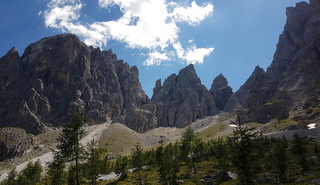
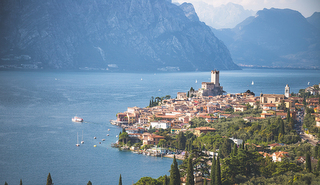
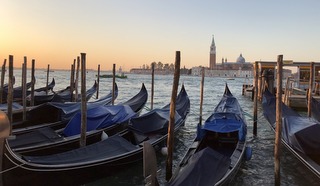
Veneto highlights
The Veneto’s towns and cities are a major attraction, with top spots including, of course, its capital city of Venice and its largest city, Verona. Others worthy of note include Padua and the stylish town of Cortina d’Ampezzo, and smaller towns such as Bassano del Grappa and Vicenza, and many are filled with wonderful art and architectural treasures. Meanwhile, in the countryside, the elegant Palladian villas built by renowned architect, Andrea Palladio, provide a tranquil alternative to the hustle and bustle of Venice and Verona.
Cortina d’Ampezzo lies to the north of the region, set amidst the high mountain peaks of the Veneto Dolomites, and a starting point for the magnificent Tre Cime hike. The hiking in the region is actually quite diverse, encompassing six nature reserves that range from the jagged Dolomites to Italy’s largest natural park, the Po Delta.
But no trip to the Veneto is complete without learning about its wines. The region is Italy’s biggest wine-producing area, with a wide variety of delicious wines, ranging from sparkling prosecco and refreshing white Soave to Valpolicella and the full-bodied red Amarone.
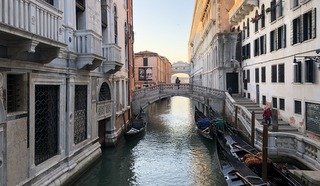
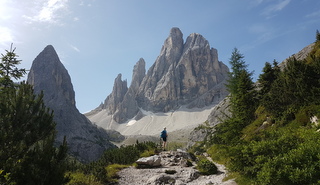
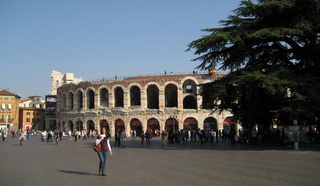
Food and Drink
In culinary terms, the region is extremely diverse although as in every Italian region, pasta finds its way on to the menu with its own local flavour. The most common pasta in the Veneto is ‘bigoli’, generally made with whole wheat or 00 flour and rather resembling a slightly coarse thick spaghetti. Accompanying sauces include a duck or sausage ragu or anchovies. Polenta, often grilled or fried, and risotto dishes such as ‘risotto al nero di seppia’ are also popular and risotto is also paired with radicchio, a delicate bitter chicory from Treviso. Other specialities that are exclusive to a specific location but found throughout the region include ‘Sopressa Vicentina’, the region’s salami, DOP white asparagus from Bassano (delicious in risotto or as a creamy soup) and Asiago cheese, a DOP semi-hard cow’s milk cheese produced in the foothills of Vicenza. Local sweet treats include Venetian ‘baicoli’, simple biscuits that were designed to be consumed during long fishing trips and ‘pan co a suca’ a pumpkin bread shaped in loaves or mini rolls. And lastly, while several Italian regions claim to be responsible for the globally recognised dessert of Tiramisù, it is generally considered to have been invented in Treviso, now home to an annual Tiramisù World Cup.
So, what about drinks? The Veneto’s varied landscape produces a diverse selection of excellent wines. Prosecco is king and the perfect accompaniment to tapas-style ‘cicchetti’. The region – and Padua specifically – was also the birthplace of Aperol, in 1919. Top wines include Bardolino and Valpolicella which are produced on the shores of Lake Garda from the Corvina, Rondinella and Molinara grape, with the same grapes used for the full-bodied red Amarone della Valpolicella. Leading white wines include dry, aromatic Soave and Lugana, produced from the Trebbiano di Lugana grape on the Veneto/Lombardy border.
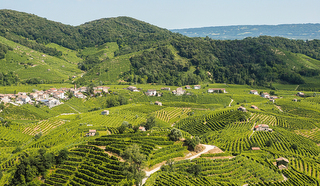

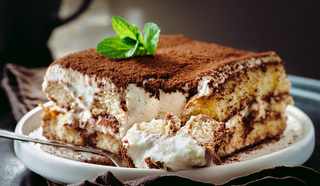
Towns and cities
If you’re not overly fazed by crowds, then Venice has to be your first stop in the Veneto. Schedule visits to the Doge’s Palace, Basilica di San Marco and the Palazzo Ducale but leave time too to lose yourself along the quieter canals and side streets, and to hop over to the islands of Murano and Burano.
Verona is the region’s biggest city, best known for its Shakespearean connections and the Arena, which hosts the summer Opera Festival. Just half an hour by train from Venice is Padua, a lively town with a wonderful daily market in the main Piazza delle Erbe and a cornucopia of art and architectural treasures, including the Capella degli Scrovegni, Padua’s answer to the Sistine Chapel. A short train ride from Padua, Vicenza is a pretty little town, best known for its Teatro Olimpico and Palladian buildings, including the Basilica Palladiana.
Other smaller attractive towns in the region include Bassano del Grappa, Rovigo, Asolo, Treviso and Chioggia.


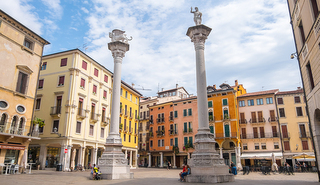
Top things to do in the Veneto
Head out of town to visit the Palladian countryside houses built by architect Andrea Palladio for the Venetian aristocracy. The most famous include La Rotonda, a hilltop villa on the outskirts of Vicenza, Villa Emo, and Villa Foscari (also known as ‘Malcontenta’) on the banks of the River Brenta.
With the region being the largest thermal basin in Europe, there are multiple opportunities for spa days. Visit the thermal springs at Abano close to Padua, where you can combine golf, hiking and cycling with an indulgent blend of mud baths, massages and balneotherapy.
Holidays in the Veneto
We enjoy hiking on the borders of the Veneto region on the final day of our Austria and the Dolomites tour when we hike on a mountain trail in the heart of the Sesto Dolomites. The tour ends in Verona so if you’re interested in exploring more of the region, you may wish to extend your holiday by taking in an opera or visiting any of the nearby towns. Alternatively, our Slovenia and Friuli tour finishes in Venice.
Getting there
Scheduled and budget (Ryanair, Easyjet) airlines fly to the region’s international airports at Venice Marco Polo, Treviso and Verona. Trains connect all the region’s major towns and buses connect the smaller towns and villages.
For more information on the Veneto, please visit the Italian Tourist Board.
